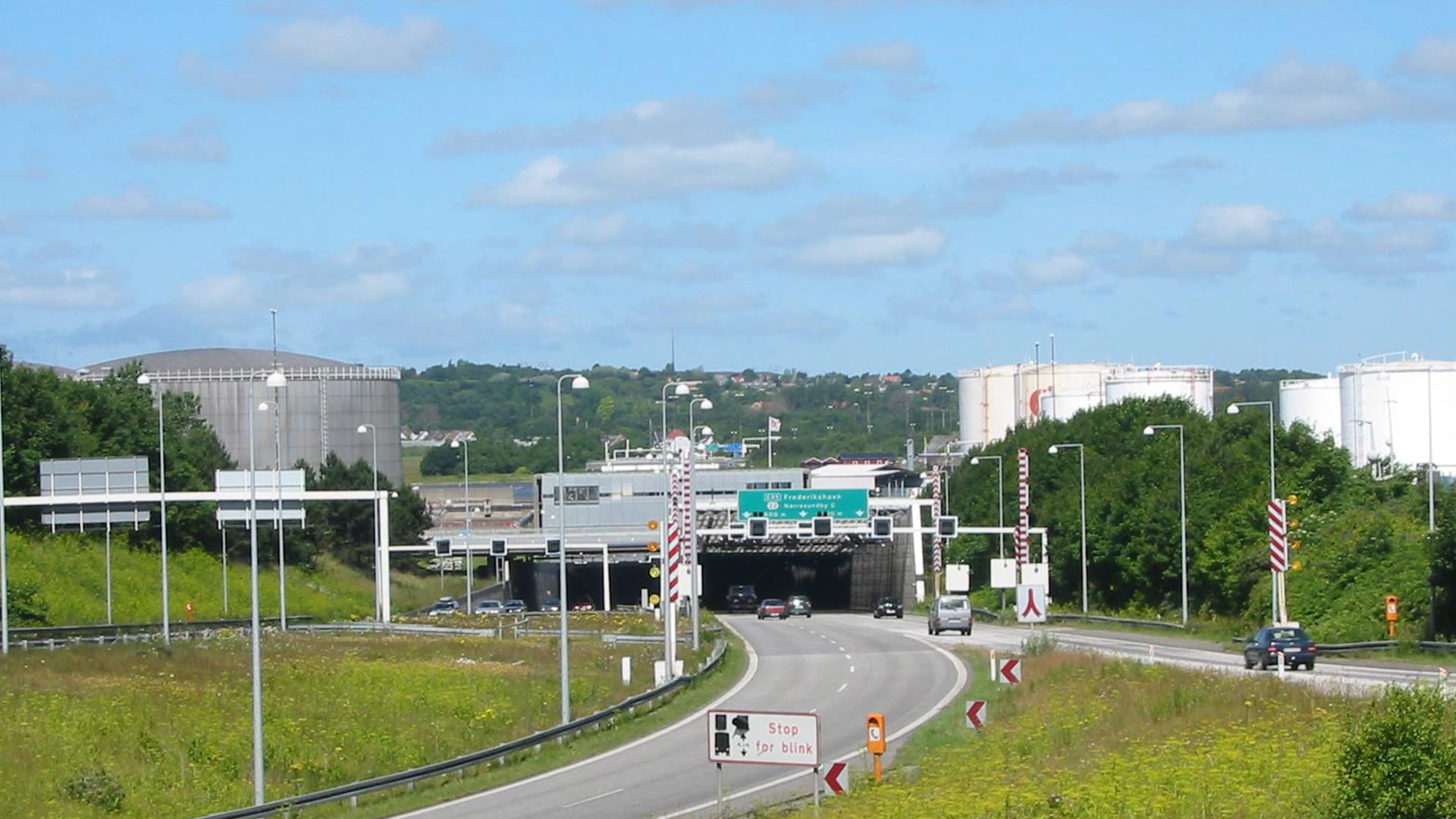Shaping the future of the Limfjord tunnel, Aalborg, Denmark

Keeping the Limfjord tunnel flowing
In operation since the late 1960s, the Limfjord road tunnel – a monolithic reinforced concrete structure – links Aalborg, Denmark’s fourth largest city, and neighbouring Nørresundby. These cities lie at the heart of the Aalborg municipality, with the airport located in Nørresundby and Aalborg being home to the region’s port, a prestigious university, spectacular waterfront, and iconic architecture.
The Limfjord tunnel stretches for 945m and carries three lanes of traffic in each direction making it an important route for commuters, freight, and leisure transit. Higher than expected levels of leakage and settlement of the tunnel have been observed from the time of construction, leading to sporadic maintenance closures and significant disruption to traffic flow.
Tunnel owner, the Danish Road Directorate, was concerned about the durability and life expectancy of the tunnel so established a Structural Expert Group of leading tunnel industry experts, including TEC, to determine the future of the Limfjord tunnel.
The future of the Limfjord tunnel
With significant safety and operational concerns, the Structural Expert Group was commissioned to provide a detailed analysis of the leakage and settlement issues and the impact these might have on the longevity of the tunnel.
The group included experts in immersed tunnelling, structural and geotechnical engineering and concrete repair strategies. Following detailed condition assessments, the group was able to define scope packages for further detailing by assigned project teams.
The studies and assessments undertaken:
- Structural condition assessment in both transverse and longitudinal directions and verification in accordance with the Eurocodes or more state-of-the art design codes.
- Comprehensive physical condition assessment of the tunnel structure (destructive and non-destructive testing material, chemical content, chloride and water content, HCP measurements).
- Assessment of the tunnel joints.
- Development of a basic maintenance and repair strategy; business continuity supplemented by additional recommendations.
- Remedial actions including geotechnical and structural retrofitting projects.
- Development of criteria to monitor tunnel behaviour over the next 50 years, including threshold levels for the implementation of retrofitting projects.
Fifty years of use ahead
Following the extensive studies and assessments it was concluded that the Limfjord tunnel will continue to meet safety standards for at least the next 50 years.
The recommended basic maintenance and repair strategy combined with the monitoring plan and back-up retrofitting programme to be implemented in case of a sudden degradation of tunnel condition were deemed a viable operation and maintenance strategy.
Although the repair and maintenance schedule will be long term, the conclusions offer a solution which offers a very significantly lower cost in terms of financial and environmental impact than the creation of an entirely new tunnel.
Thanks to proactive engagement by the client and successful collaboration across the working group, the tunnel can continue to provide a vital road link across the Limfjord.
Project facts
- ClientDanish road Directorate
- LocationAalborg, Denmark
- Period2018-2019
- ChallengeAssessing life expectancy of immersed Limfjord tunnel
- SolutionProvide expert analysis regarding the condition of the Limfjord tunnel and devise maintenance plan.
